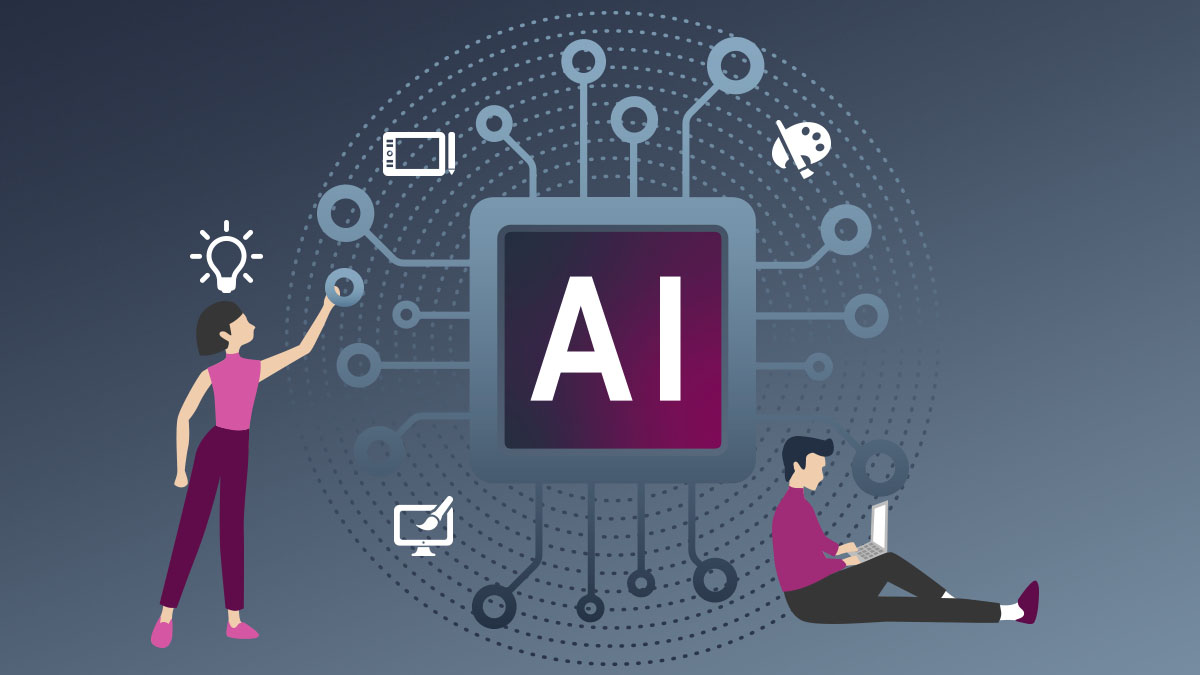The rapid advancement of Artificial Intelligence (AI) in graphic design cannot be overstated, challenging traditional design and stirring concerns about the future role of graphic designers. As AI technologies become more integrated into the design process and automate tasks traditionally reliant on human creativity, designers can elevate their creative potential. By merging traditional design skills with cutting-edge AI tools, they can produce innovative and impactful designs. While some designers may be hesitant to fully embrace AI, dismissing its expansive potential will hinder one’s creative edge in the ever-evolving design industry. Designers must leverage these technological advancements to enhance their own creativity and ensure that the human element of design remains an indispensable part of the design equation.
Relying Strictly on Traditional Design Methods Will Render Designers Irrelevant and/or Inefficient
The integration of traditional design tools with AI marks an important milestone in the evolution of design. While some argue that clinging solely to traditional methods risks making designers obsolete in the presence of AI advancements, a more nuanced viewpoint suggests that a collaboration between the two disciplines is not only possible but essential for innovation.
Traditional design tools include a wide array of techniques and instruments deeply ingrained in design practices, ranging from sketching with a pencil or pen to computer-aided digital art programs. These tools have historically been the cornerstone of the design process, enabling designers to iterate ideas, communicate concepts, and create tangible mockups. However, AI offers efficiency, scalability, and an opportunity to amplify human creativity allowing designers to push beyond traditional boundaries.
Ignoring AI’s Role in Graphic Design Will Jeopardize Your Creative Edge
AI technology offers a plethora of tools and capabilities that can supplement the design process, enhance creativity, and drive forward-thinking solutions. AI-based tools can assist in the automatic generation of design variations, enabling designers to explore different options quickly. It also enables designers to experiment with novel design techniques and explore unconventional ideas that may not have been possible using traditional methods alone. AI algorithms can assist in tasks such as layout generation, color palette selection, and even ideation, allowing designers to explore new concepts and push the boundaries of creativity. Additionally, virtual assistants, powered by AI algorithms, can help generate ideas, suggest typefaces and color combinations, and even create initial sketches.
AI can assist designers with the following tasks:
Logo Design
AI can use its algorithms to create logo concepts based on descriptive keywords. Examples of some AI logo
tools are Logojoy, Looka, Tailor Brands, Brandmark, and Logomaster. These helpful tools can help creatives design a logo based on a few questions, a color, an icon, a style, a name, or an industry.
Web Design
AI can generate website layouts based on content or a desired style. Examples of some AI web design tools are Squarespace, Wix ADI, Bookmark and The Grid. Layouts can be generated using these tools based on a few questions, templates, color scheme, and even moods.
Animations
Designers can utilize AI tools to build more realistic animations or motion graphics more easily. Examples of some AI animation tools are LottieFiles for Adobe After Effects, Toonify, Runway ML, and Adobe Character Animator. With these tools designers can perform visual wonders like transforming a photo into a cartoon, turning a video into an animated painting, or animating characters based on a voice recording or facial expression.
Content Creation
AI can significantly enhance the capabilities of graphic designers by automating the generation of text or images, which can then be incorporated into their design projects. AI tools can perform routine tasks such as color selection, swapping and corrections; image cropping and resizing; removing backgrounds; and creating basic layouts. This automation frees designers to focus on more creative aspects of content creation. Examples of some AI content generation tools are Chat GPT-4, DALL•E, Canva, and Copysmith.
Data Driven Decisions
AI can analyze large sets of design data to identify trends and preferences, aiding designers in making informed decisions. For example, using an AI tool to analyze which color schemes are most engaging for a target audience can inform the creative process. AI can help also create designs that adapt to individual user preferences and behaviors, offering a more personalized experience. Netflix’s personalized thumbnails are a prime example where AI analyzes your viewing habits to present the most appealing thumbnails for shows and movies.
Prototyping and Feedback
AI can be used to create interactive prototypes, making it easier for designers to visualize and test user experiences. AI can also simulate user interactions, providing early feedback on design usability.
Address Creative Ownership Concerns or Risk Being Replaced
Using AI in graphic design presents several ethical concerns that challenge the traditional concept of creative ownership. As AI becomes increasingly advanced, the line is blurred between how much of the work is created by the human designer and how much is generated by the AI algorithms. Transparency is crucial in addressing this ethical situation by forming clear guidelines for ownership and attribution. As AI tools become more sophisticated, there is a fear amongst graphic designers that they may be replaced by AI, leading to job displacement. Designers must be supported and empowered so that their creative contributions do not get lost amidst the technological advancements of AI.
Ignoring AI’s Role in Graphic Design Will Endanger Your Creative Edge
In the rapidly evolving landscape of graphic design, failure to incorporate Artificial Intelligence into design work will result in the loss of a competitive edge and limit the potential for innovation and growth. AI offers unparalleled efficiency gains, innovative tools, and insightful analytics that elevate design outcomes and streamline workflows. By embracing AI, graphic designers can stay ahead of the curve, deliver superior work, and remain competitive in the ever-evolving design industry.
